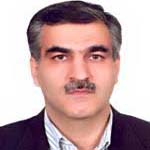Examining the energetics of secondary downstream development for two cyclone cases over western Iran
Author(s):
Abstract:
In this research energetics of the barotropic and baroclinic development for two planetary waves over eastern Mediterranean, Syria and west of Iran and their interaction with surface cyclones were investigated. Ahmadi-Givi et al. (1384) calculated and examined several selected important terms in the eddy kinetic energy (EKE) tendency equation during life cycle of six troughs that were developed with downstream development over Europe. They showed that almost for all cases the ageostrophic flux convergence (AFC) was the main factor in development of the systems. AFC causes radiative energy transport from upstream of the wave to the downstream of the trough. For mature baroclinic waves, this radiative energy transport causes dispersion of the upstream wave and forming a new wave downstream. Orlanski and Gross (1993) simulated the effect of topography on cyclone development over the Mediterranean using primitive equations. They showed that when mature troughs cross east-west Mountains, strong cyclones form over the south of the mountain and if the isotherms are also oriented in the east-west direction, baroclinic development is intensified. Northward advection of warm and moist air to higher latitudes accounts for baroclinic development and secondary development. In some cases baroclinic energy conversion between separated cyclones is responsible for the cyclone development (Chang, 2000). Decker and Martin (2005) examined the life cycle of two cyclones that had similar track over North America. They showed that the first cyclone intensified and damped much faster than the second cyclone. The reason for this is that the development and damping of the first and second cyclones occurred upstream and downstream of the trough respectively. Nasre-Esfahani et al. (1389) examined the effects of several important forcing terms in the EKE tendency equation for critical positive months (CPM) and critical negative months (CNM) of the North Atlantic Oscillation (NAO) over the Mediterranean and Middle East. Their results indicated that there is no considerable difference in the amount of EKE between CPM and CNM in the Mediterranean region. However, moving eastward, the values of EKE become greater in the CPM than in the CNM in such a way that the difference between the two reaches its maximum over the south west of Iran. Also, in the CPM, all of the computed forcing terms are larger than in the CNM. In this research, National Center for Environmental Prediction (NCEP) Climate Forecast System Reanalysis (CFSR, Saha et al., 2010) data with 0.5 degree horizontal resolution, described by Saha et al., 2010 are used to extract several fields including geopotential height, horizontal wind vector, relative vorticity and temperature at several vertical levels. Thickness fields and several important EKE tendency forcing terms for 00, 06, 12 and 18 UTC for two case studies, that cover the period 14-18 January 2004 and 27-29 January 2000 are then calculated. Following Orlanski and Katzfy (1991), different forcing terms in the EKE tendency equation including baroclinic and barotropic conversions, zonal and eddy advections and AFC are derived. Time mean stress term is also calculated according to Decker and Martin (2005). Results showed that the first cyclone on January 2004 was formed over western Mediterranean. It was then weakened over the eastern Mediterranean and subsequently intensified in two other regions as it moved to the west of Iran. At the beginning, there was a strong energy center over Mediterranean associated with the polar jet at the upstream of the trough. Ageostrophic energy flux from this center to the downstream of the trough causes downstream intensification of the energy center east of the Mediterranean and west of Iran. It is shown that baroclinic energy conversion and ageostrophic flux convergence are the most important factors in the secondary development of the energy center over north of Saudi Arabia and east of the Mediterranean and subsequently over west of Iran. Increase of the energy tendency terms over eastern Mediterranean and Syria is due to the warm and moist air advection over the Red Sea and combination of the thermal Sudanic low and the low pressure situated at higher latitudes. Forced vertical motion over the mountain ranges located west of Iran accounts for the increase of the energy tendency terms. For the second cyclone on January 2000, similar to the first case, there is a strong energy center over the Mediterranean at the upstream of the associated trough. The subtropical jet causes a strong ageostrophic energy flux from the upstream energy center to the downstream of the trough and developing a downstream energy center over northern Saudi Arabia and west of Iran. Moreover, similar to the first case, warm and moist air advection over northern Saudi Arabia and eastern Mediterranean and subsequently forced vertical motion over the west of Iran are responsible for intensification of the baroclinic factor and downstream development of the energy center. But for this case, barotropic factor (such as Reynolds stress) is important for the intensification of the energy enter. Stated differently, the role of the subtropical jet in intensification of the cyclone over south of Iran is clearly seen.
Keywords:
Language:
Persian
Published:
Journal of the Earth and Space Physics, Volume:39 Issue: 4, 2014
Pages:
159 to 175
magiran.com/p1225668
دانلود و مطالعه متن این مقاله با یکی از روشهای زیر امکان پذیر است:
اشتراک شخصی
با عضویت و پرداخت آنلاین حق اشتراک یکساله به مبلغ 1,390,000ريال میتوانید 70 عنوان مطلب دانلود کنید!
اشتراک سازمانی
به کتابخانه دانشگاه یا محل کار خود پیشنهاد کنید تا اشتراک سازمانی این پایگاه را برای دسترسی نامحدود همه کاربران به متن مطالب تهیه نمایند!
توجه!
- حق عضویت دریافتی صرف حمایت از نشریات عضو و نگهداری، تکمیل و توسعه مگیران میشود.
- پرداخت حق اشتراک و دانلود مقالات اجازه بازنشر آن در سایر رسانههای چاپی و دیجیتال را به کاربر نمیدهد.
In order to view content subscription is required
Personal subscription
Subscribe magiran.com for 70 € euros via PayPal and download 70 articles during a year.
Organization subscription
Please contact us to subscribe your university or library for unlimited access!



